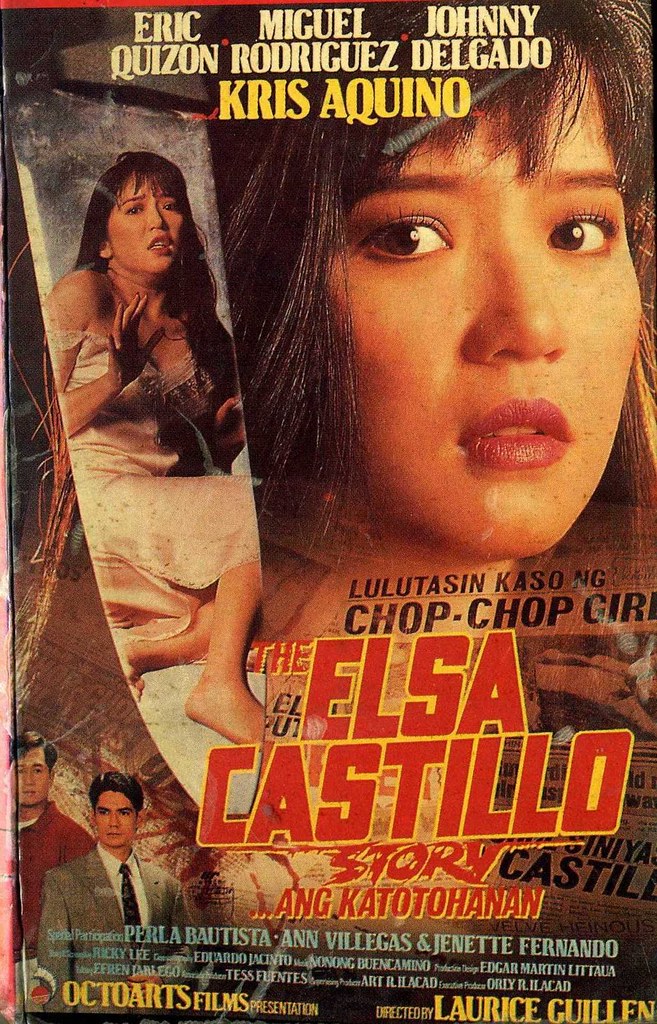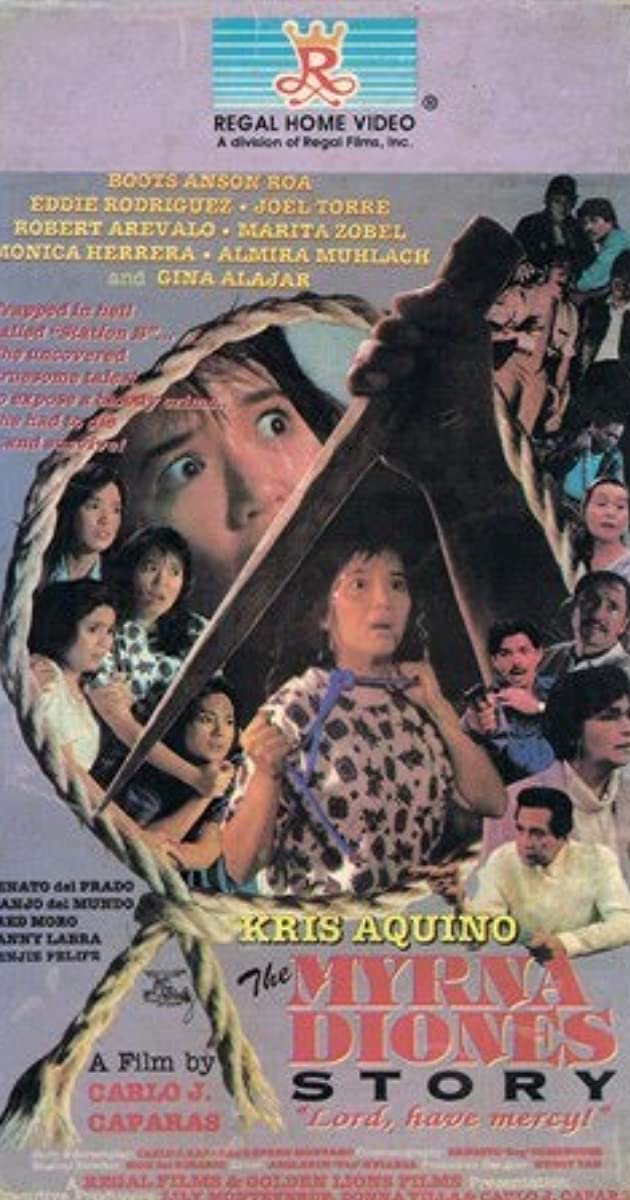Pinoy massacre movies: Why are we so fascinated by true crime?
The popularity of the documentary American Murder: The Family Next Door somehow makes it feel like it’s 1993 all over again.
That’s the year The Vizconde Massacre Story: God Help Us! came out in theaters and made a killing at the box-office. It ended up as the highest-grossing movie of the year and set off the so-called “massacre movies” trend in Philippine cinema.
The movie is not a documentary. It’s a cinematic telling of the rape and murder of the Vizconde women—Estrellita, 47, Carmela, 18, Jennifer, 7—inside their own house in Parañaque on the night of June 30, 1991.
Cinematic in this case does not necessarily mean artistic or artful. It means big screen-size, larger than life. It means “Based on true events” but told with all the bells and whistles of overripe melodrama.
“It does not appear that the movie intends to provide objective narration of the events of 1991 as much as it tries to evoke a certain psychological mood,” writes award-winning author and broadcast personality Lourd de Veyra about the movie in his book This is a Crazy Planets, a collection of essays on Philippine pop culture.
There are dream sequences and hallucinations and even a seance, wall-to-wall musical scoring (de Veyra notes an overuse of strains from the Hollywood horror classic Psycho), and black-and-white characterization.

How black is black? De Veryra notes: “The rapist John Regala wears a belt with a buckle that says ‘SEX’ in case we miss the point that he's a sex-starved druggie. And also just in case we don't get the hint that he's a drug addict, he is shown playing billiards with his friends while attempting to snort a whole bag of cocaine, in a manner that would shame Al Pacino in Scarface. And to drive home the point that he is an evil and dangerous man, his appearance is always punctuated by the opening riffs of Metallica's Creeping Death.”
While film critics were heaping hate on ‘Vizconde Massacre,’ audiences were filling the cinemas to the rafters. And Carlo Caparas laughed all the way to the bank.
He adds that Regala, during the climactic rape and massacre scenes, “plays it to the hilt sweating, growling wagging his tongue, and making exaggerated snorting sounds, again, in case we miss the point that he's a coke-head.”
The Vizconde case was a news sensation in media. People instantly took to it largely because it was the first grisly crime of the sort that had come in ages. The drama heightened further and plucked even more heartstrings with the arrival back in the Philippines of the patriarch, Lauro Vizconde, who was on a business trip in the US when the crime happened. The family was now complete, but what a reunion it was—a father coming home to his beloved wife and children, each one lying in a coffin.
This was a movie scene waiting to happen. That the wait for it to finally make it to the big screen took two years (The Vizconde Massacre Story premiered in cinemas on June 24, almost exactly two years after the murders) mattered little to the viewing public.
This was a story they were very familiar with, probably even embraced wholeheartedly as though part of their own family history. But it was one that had not yet reached the end, as no one has yet to be charged and punished for the multiple crimes when the movie came out (Hubert Webb and his group only emerged as suspects in 1995 following the testimony of self-confessed eyewitness Jessica Alfaro).

Audiences may have looked to the Kris Aquino starrer to provide some emotional release and, more importantly, closure, if not actual answers, which they weren’t getting from real life. Movies, after all, are generally expected to have full, rounded stories with definite endings.
The Vizconde Massacre Story was some sort of a mold-breaker in Philippine cinema. It gave audiences raw and unpolished aesthetics that veered away from the glossy melodramas that dominated commercial movies since the early ‘80s. The casting of Kris Aquino was also something new. This was her first drama outing after carving a name for herself as a bankable star with a long string of comedies including the Pido Dida trilogy.
Two years and many movies later, viewer fatigue for the genre set in and not even the likes of bankable stars Vilma Santos and Dawn Zulueta could reverse the downward trend.
These novelties may have only bolstered the movie’s box-office appeal. But the star attraction was the biggest novelty. Movies based on the lives of real people had been popping up every now and then though the years (mostly controversial male personalities including notorious criminals), but this was the first mainstream “true story” flick that was built around a specific case. That it was as sensational, that the crime was as grisly as this particular rape and murders proved to be an irresistible proposition to viewers. Especially because it was filmed where the actual crimes took place.
It helped that the storytelling of the film’s writer-director Carlo Caparas comes in broad strokes. The good people are good, some even to the point of saintliness; the bad ones are bad, some to the point of evil.
It’s a carry over from his origins as a comic book writer (he is the creator of Panday) and it made Vizconde Massacre fit perfectly in the mold of movies that mainstream Pinoy audiences of the era preferred—stories of good people suffering terrible things in the hands of bad people.

You don’t get more “lowest common denominator” than that. And so, while film critics were heaping hate on the movie, audiences were filling the cinemas to the rafters. And Caparas, who also produced the movie through his own company, Golden Lions Films, laughed all the way to the bank.
True crime, true horrors
At least eight other so-called “massacre movies” based on sensational real crime stories tried to replicate the commercial success of Vizconde Massacre in the two-year period following its release.
Most were from Caparas himself including the 1994 sequel titled The Untold Story: Vizconde Massacre II: May The Lord Be With Us! which covered subsequent developments on the case and saw Vina Morales taking over the role of Aquino.
Caparas and Aquino did collaborate on two other titles, Humanda Ka Mayor!: Bahala Na Ang Diyos and Myrna Diones Story: Lord Have Mercy! The former was loosely based on the murders of UP Los Baños students Eileen Sarmenta and Allan Gomez in the hands of Calauan Mayor Antonio Sanchez and his men on June 28, 1993, just four days after the release of the first Vizconde movie. The movie did not use the actual names of those involved in the crime as the case was still very much ongoing. It was shown later that year.
Talk about striking while the iron is hot. Two other true crime movies were also released less than six months after the crime was committed. The Elsa Castillo Story…Ang Katotohanan and Chop-Chop Lady: The Elsa Castillo Story starred Kris Aquino and Lorna Tolentino, respectively, in the title role of Elsa Castillo who was murdered on Sep. 23, 1993. The movies debuted in theaters on Jan. 27 and Feb. 2, respectively, of the following year.

These back-to-back “twin movies” were immediately followed on Feb. 8 by another murder flick. Starring Sharon Cuneta, The Lilian Velez Story: Till Death Do Us Part was another Caparas movie and told the story of another crime that scandalized the entire nation. But it wasn’t current or even remotely recent. The double murder of actress Lilian Velez and her housemaid in her home happened in 1948.
These three films received wide media coverage, no doubt partly because of the star wattage of the leads, but only Aquino’s movie made some dent at the box-office.
Apparently viewer fatigue for true crime movies had already started to set in and not even the likes of bankable stars Vilma Santos and Dawn Zulueta could reverse the downward trend that unofficially reached the end almost exactly two years after the release of The Vizconde Massacre Story. The loud thud that met The Jessica Alfaro Story, based on the life of the star witness on the Vizconde case, when it opened in theaters on June 8, 1995 signaled the death of the “massacre movies.”
Will the success of American Murder revive local movie producers’ and audiences’ interest in new Pinoy crime movies? God forbid! Lord, spare us from that evil!


